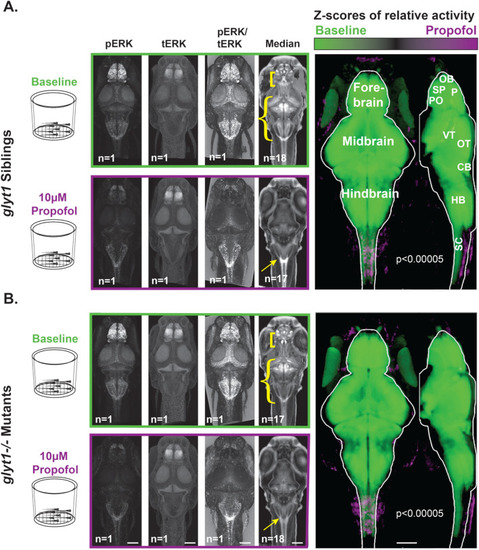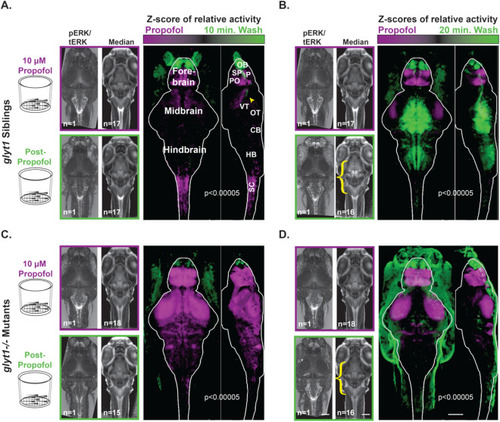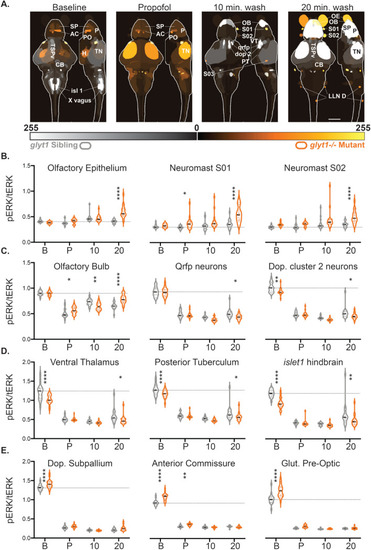- Title
-
Elevated preoptic brain activity in zebrafish glial glycine transporter mutants is linked to lethargy-like behaviors and delayed emergence from anesthesia
- Authors
- Venincasa, M.J., Randlett, O., Sumathipala, S.H., Bindernagel, R., Stark, M.J., Yan, Q., Sloan, S.A., Buglo, E., Meng, Q.C., Engert, F., Züchner, S., Kelz, M.B., Syed, S., Dallman, J.E.
- Source
- Full text @ Sci. Rep.

ZFIN is incorporating published figure images and captions as part of an ongoing project. Figures from some publications have not yet been curated, or are not available for display because of copyright restrictions. PHENOTYPE:
|

ZFIN is incorporating published figure images and captions as part of an ongoing project. Figures from some publications have not yet been curated, or are not available for display because of copyright restrictions. PHENOTYPE:
|

ZFIN is incorporating published figure images and captions as part of an ongoing project. Figures from some publications have not yet been curated, or are not available for display because of copyright restrictions. PHENOTYPE:
|
|
Brain-wide activity in both PHENOTYPE:
|
|
Compared to |
|
|

ZFIN is incorporating published figure images and captions as part of an ongoing project. Figures from some publications have not yet been curated, or are not available for display because of copyright restrictions. PHENOTYPE:
|



